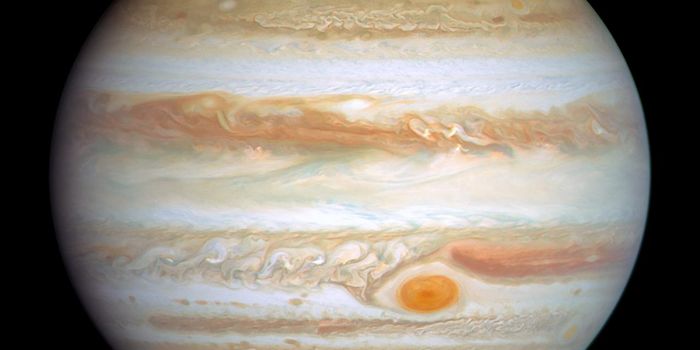NASA's OSIRIS-REx Capsule Safely Returns Asteroid Bennu Samples to Earth
This past Sunday, September 24, 2023, marked the end of a journey that spanned just over seven years and billions of miles, as NASA’s OSIRIS-REx capsule smashed through the Earth’s atmosphere en route to a parachute landing at the Utah Test and Training Range, and with it, 8.8 ounces (250 grams) of samples from the asteroid Bennu, which marks the first time the United States has successfully returned asteroid samples to the Earth. Launched on September 8, 2016, OSIRIS-REx arrived at Bennu on December 3, 2018, spent all of 2019 and most of 2020 looking for a safe spot to sample, which it finally collected on October 20, 2020, then started the return trip home on May 10, 2021.
NASA’s OSIRIS-REx mission sample return capsule image shortly after landing at the Department of Defense's Utah Test and Training Range on Sunday, Sept. 24, 2023. The small sample of dust and rocks was collected from the asteroid Bennu in October 2020 by NASA’s OSIRIS-REx spacecraft. (Credit: NASA/Keegan Barber)
“Today marks an extraordinary milestone not just for the OSIRIS-REx team but for science as a whole,” said Dr. Dante Lauretta, who is principal investigator for OSIRIS-REx at the University of Arizona. “Successfully delivering samples from Bennu to Earth is a triumph of collaborative ingenuity and a testament to what we can accomplish when we unite with a common purpose. But let’s not forget – while this may feel like the end of an incredible chapter, it’s truly just the beginning of another. We now have the unprecedented opportunity to analyze these samples and delve deeper into the secrets of our solar system."
The capsule and its trajectory were both monitored from the air and ground using a combination of optical, infrared, and radar instruments to ensure the capsule was still en route for its planned soft landing in the Utah desert. After smashing through the atmosphere just off the California coastline at a breathtaking 27,650 mph (44,500 kph), the capsule landed just 10 minutes later at a gentle 11 mph (18 kph). After it was successfully retrieved and put under a “nitrogen purge” to remove all oxygen from the cannister after being introduced to Earth. The reason for the nitrogen purge is to prevent oxygen from rusting the samples, after which the capsule was transported on Monday, September 25 to NASA’s Johnson Space Center where it will be carefully disassembled, and all rock and dust samples will be meticulously inventoried before sending pieces of the samples to scientists around the world.
Studying asteroids samples like the ones collected from Bennu will help scientists better understand the formation and evolution of planets, as well as organics which lead to the formation of water, and ultimately, life on Earth.
“The whole team had butterflies today, but that’s the focused anticipation of a critical event by a well-prepared team,” said Rich Burns, who is the project manager for OSIRIS-REx at NASA’s Goddard Space Flight Center. “For us, this was the World Series, ninth inning, bases-loaded moment, and this team knocked it out of the park.”
How will these Bennu samples teach us about the solar system in the coming years and decades? Only time will tell, and this is why we science!
As always, keep doing science & keep looking up!









